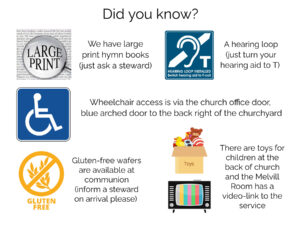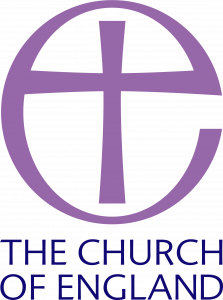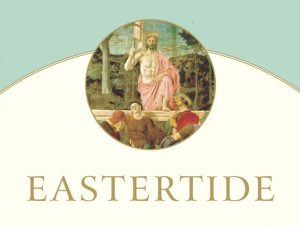The great Fifty Days of Eastertide form a single festival period in which the tone of joy created on Easter Day is sustained through the following seven weeks, and the Church celebrates the gloriously risen Christ. Early Christians gave the name Pentecost to this whole fifty-day span of rejoicing, which the early Church teacher Tertullian calls ‘this most joyful period’. It is sometimes called ‘Great Sunday’.The new Easter candle is first lit at dawn on Easter morning and the lit candle stands prominently in church for every Sunday through Eastertide. Alleluias, which are avoided during Lent, appear frequently through Easter season in speech and song.White and gold vestments and decorations emphasize the joy and brightness of the season. Flowers reappear in church after their absence during the penitential season of Lent.On the fortieth day there has, from the late fourth century, been a particular celebration of Christ’s ascension. He commissions his disciples to continue his work, he promises the gift of theHoly Spirit, and then he is no longer among them in the flesh.The Ascension is therefore closely connected with the theme of mission–the sending out of his followers into the world to do the work of God. The arrival of the promised Holy Spirit on the day of Pentecost completes and crowns the Easter festival.
Online Church at St Mary's Barnes
Our main services are normally streamed to YouTube.
Click the icon below to access St Mary’s Barnes YouTube channel

View details of this week's services








